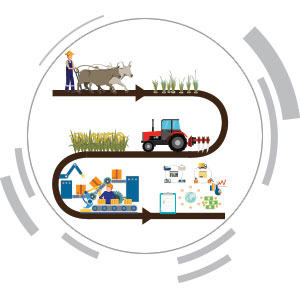
How can Indonesia successfully accelerate the structural transformation of its economy? What policies can help boost productivity? What investments are needed to drive the development of sectors with strong potential for growth?And how can advances in technology facilitate structural transformation?
Indonesia has experienced consistent economic growth over the past 20 years. But the transition from an agricultural economy to an economy based on the manufacturing and service sectors has been slower than expected. Agriculture remains the largest source of employment in Indonesia; while most of the labor transfer from the agricultural sector is absorbed into the low-quality service sector. Although the number of workers employed in the manufacturing sector in Indonesia has risen consistently, from 6 million in 1988 to 17 million in 2017, employment in the sector as a proportion of the total labor force has only increased from 10 percent to 14 percent. This indicates that the manufacturing sector has not been a main driver of economic growth, at least in terms of job creation. This is in contrast to other countries, where excess agricultural labor tends to be absorbed into the manufacturing sector. To accelerating structural transformation, Indonesia needs to boost productivity across all sectors, and make smart investments that will help drive the development of sectors with strong potential for growth. It also needs to develop strategies to take advantage of the opportunities that the fourth industrial revolution brings.
This sub-theme aims to explore:
- Solutions to increasing labor productivity in Indonesia;
- Strategies to support manufacturing growth for accelerating structural transformation and create employment;
- How industry 4.0 can improve labor productivity and secure employment creation;
- Strategies to prepare labor force and labor market to respond to industry 4.0;
- How to develop quality employment in services sector as a driver of growth;
- Reforming labor laws to boost productivity and competitiveness.

